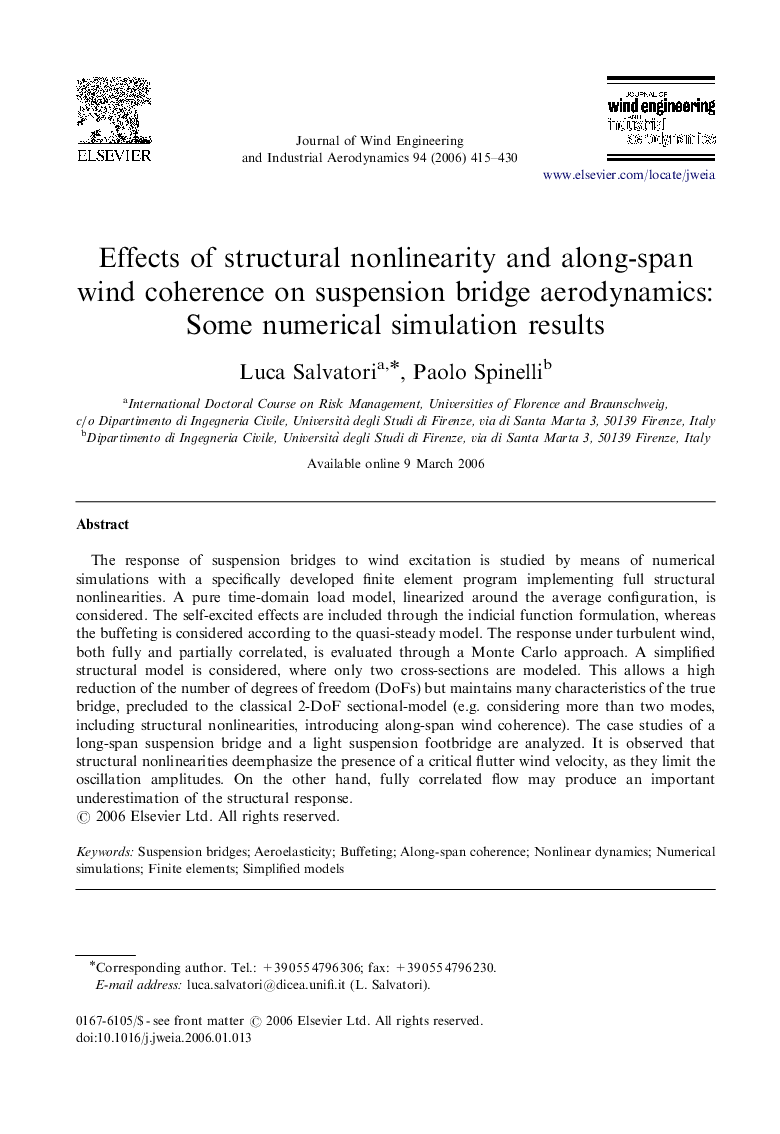| Article ID | Journal | Published Year | Pages | File Type |
|---|---|---|---|---|
| 292677 | Journal of Wind Engineering and Industrial Aerodynamics | 2006 | 16 Pages |
The response of suspension bridges to wind excitation is studied by means of numerical simulations with a specifically developed finite element program implementing full structural nonlinearities. A pure time-domain load model, linearized around the average configuration, is considered. The self-excited effects are included through the indicial function formulation, whereas the buffeting is considered according to the quasi-steady model. The response under turbulent wind, both fully and partially correlated, is evaluated through a Monte Carlo approach. A simplified structural model is considered, where only two cross-sections are modeled. This allows a high reduction of the number of degrees of freedom (DoFs) but maintains many characteristics of the true bridge, precluded to the classical 2-DoF sectional-model (e.g. considering more than two modes, including structural nonlinearities, introducing along-span wind coherence). The case studies of a long-span suspension bridge and a light suspension footbridge are analyzed. It is observed that structural nonlinearities deemphasize the presence of a critical flutter wind velocity, as they limit the oscillation amplitudes. On the other hand, fully correlated flow may produce an important underestimation of the structural response.
